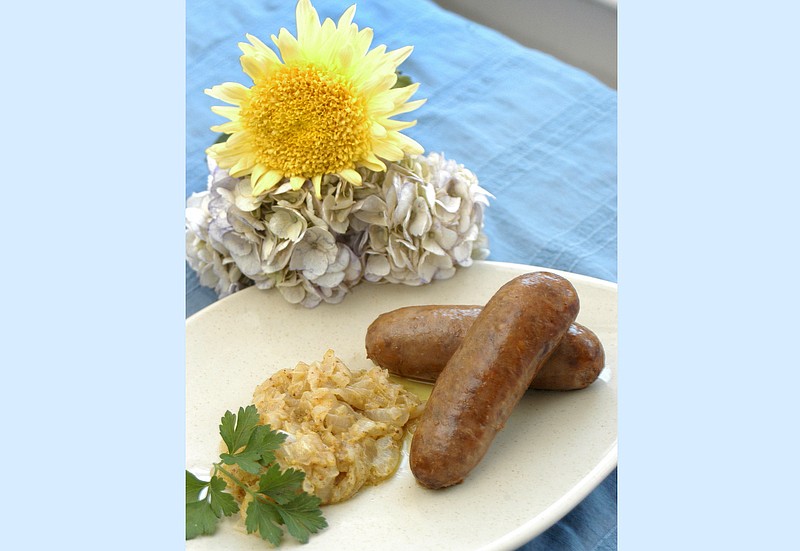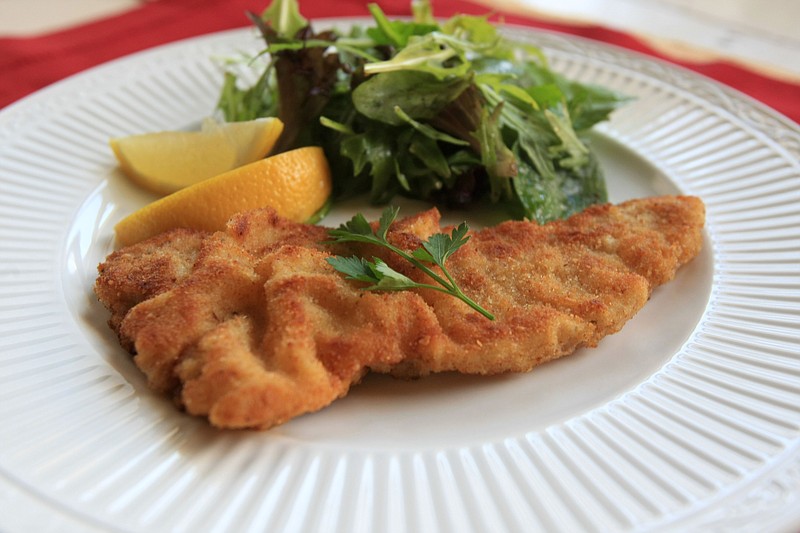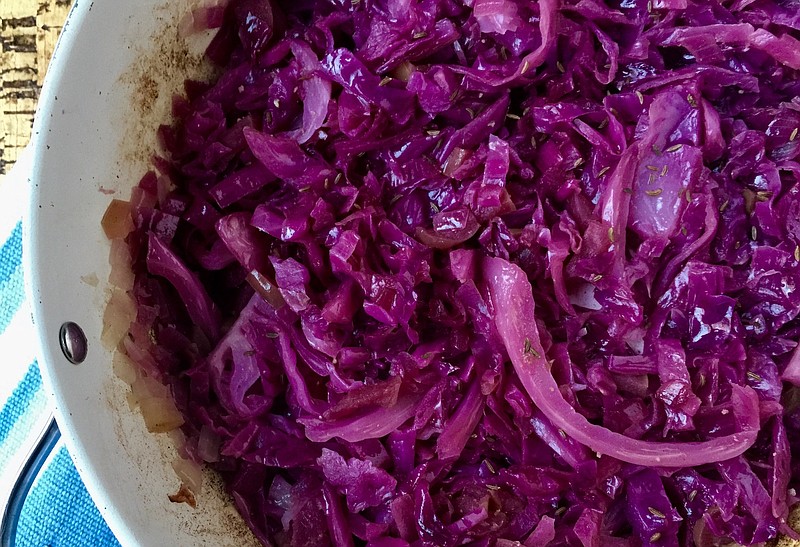There will be no strolls on Die Wiesn. No barmaids impressing festivalgoers by carrying armloads of full liter beer steins through a crowded tent. No giant pretzels. No trips on the giant Ferris wheel. No gingerbread hearts with "I mog di" scrawled in icing across the front.
Oktoberfest 2021, like Oktoberfest 2020, was canceled because of the ongoing pandemic. The 187th festival would have taken place Sept. 18-Oct. 3 in Munich.
Here in Arkansas, however, there are several celebrations planned, including but not limited to:
◼️ Rocktoberfest (Saturday at War Memorial Stadium in Little Rock, littlerocktoberfest.com)
◼️ Rusty Tractor Vineyards and Fassler Hall's second annual Oktoberfest (Sunday at Rusty Tractor Vineyards in Little Rock, rustytractorvineyards.com)
◼️ Arkansas Brewers Guild Oktoberfest (Oct. 7, Fayetteville Town Square, experiencefayetteville.com)
◼️ Rogers Oktoberfest (Oct. 9 in downtown Rogers, visitrogersarkansas.com)
But we will be celebrating Oktoberfest 2021 zu Hause (at home), where we can drink all the beer we care to without worry of how to get home and no one will judge our pale legs and decolletage if we dare to dress in lederhosen and dirndl.
We'll start with a beer, preferably one from an official Oktoberfest brewery (Augustiner, Paulaner, Spaten-Franziskaner, Lowenbrau, Hacker-Pschorr or Hofbrau), or perhaps a glass of riesling or gewurztraminer.
And then we'll have a little Obatzda, a Bavarian beer cheese spread, and maybe some pickles, followed by schnitzel with rotkohl and potatoes, and finish things off with a slice of Pflaumenkuchen (plum cake) for dessert.
On second thought, maybe we'll skip the schnitzel and have a bratwurst or weisswurst.
Speaking of wurst, do you know your wursts from your wieners?
Bratwurst: Probably the most well-known German sausage in the United States, bratwurst is made with pork and veal and is usually seasoned with caraway, coriander, ginger and nutmeg. It is normally sold "fresh," or uncooked and must be cooked completely before serving.
Frankfurter: Unrelated to the American hot dog, these smoked sausages are made with lean pork and bacon.
Knockwurst: Literally translates to "crack sausage" because it should make a cracking sound when you bite into it. Sometimes spelled knackwurst, it is made with beef or pork and flavored with garlic. It is usually cooked, however, and the flavor improves with additional cooking.
Wienerwurst: A grandfather of the American hot dog, this sausage is made with beef and pork and flavored with coriander and garlic.
Weisswurst: This Bavarian sausage is made from veal and pork, and seasoned with nutmeg and ginger. They are traditionally served for breakfast with rye bread or pretzels and sweet German mustard.
Obatzda (Beer Cheese Spread)
- 8 ounces brie or Camembert, rinds removed, chopped
- 4 ounces cream cheese, softened
- 4 tablespoons butter, cut into small pieces
- 2 tablespoons German beer (I used Hofbrau dunkel)
- ½ to 1 teaspoon caraway seeds
- 1 teaspoon paprika (do not use smoked), plus more for sprinkling
- Salt and ground black pepper, to taste
- Thinly sliced red onion or fresh snipped chives
- Soft pretzels, pumpernickel rye and/or sliced radishes, for serving
After cutting the rinds from the brie or Camembert, leave it in a mixing bowl at room temperature until softened and "runny." Once the cheese has softened, add the remaining ingredients and mix well. It's OK if it's slightly lumpy.
Transfer to a serving bowl. Serve immediately or cover and chill for about 2 hours. Sprinkle with paprika and top with red onion or chives before serving.
Makes about 4 servings.

Beer-Braised Sausage With Caramelized Onions
- ¼ cup canola oil
- 3 yellow onions (about 1 pound), peeled, quartered and thinly sliced
- Salt and ground black pepper, to taste
- 4 tablespoons German hot mustard, such as Dusseldorf
- 1 (12-ounce) bottle Oktoberfest/Marzen style beer
- 4 to 8 sausages, such as bratwurst or knockwurst, skins pricked with a fork
In a large skillet, heat oil over low heat. Add onions and cook, stirring frequently, until they are soft and golden brown. Season to taste with salt and black pepper. Stir in mustard; set aside.
In a separate large skillet, heat about ½ inch of beer over medium heat, add sausages and cook, covered, until beer has cooked away. Remove cover from skillet and cook until sausages are brown and cooked through. Serve sausages with the mustard-seasoned onions.
Makes 4 to 8 servings.
Recipe adapted from "Cooking With Beer: Taste-Tempting Recipes and Creative Ideas for Matching Beer & Food" by Lucy Saunders

Schnitzel
- 4 boneless, skinless chicken breasts OR pork loin chops OR veal cutlets
- Salt and ground black pepper
- 1 cup all-purpose flour
- 2 eggs
- 2 tablespoons milk
- 2 cups dry bread crumbs
- ¼ cup vegetable oil
- 2 tablespoons butter
- 1 lemon, cut into wedges or thin slices
Heat oven to 300 degrees.
Trim any fat or sinew from the meat. Place meat between two layers of plastic wrap and, using a meat mallet or heavy skillet, pound to about ¼-inch thick. If using veal, there will probably be no need to trim and flatten.
Season lightly on both sides with salt and pepper.
Place flour in wide shallow dish or plate.
In a separate wide, shallow dish, beat eggs with milk.
Place bread crumbs in a separate wide, shallow dish or plate.
Dip each flattened cutlet into flour, lightly coating each side and shaking gently to remove any excess. Repeat with remaining cutlets. Dip floured cutlets, one at a time, in egg mixture and use your fingers to wipe away any excess. Place cutlets, one at a time, in the bread crumbs and scoop more over the top, pressing firmly so the bread crumbs stick to both sides. Place cutlets on a plate or baking sheet; set aside for 15 minutes.
In a large, wide skillet, heat oil and butter over medium-high heat until hot but not smoking. Cook the cutlets until golden brown on one side, 2 to 3 minutes, then turn gently and brown on the other side, another 3 to 4 minutes. Don't crowd pan; you will probably be able to cook only 2 cutlets at a time. As the cutlets are done, put them on a cookie sheet lined with paper towels and place in the oven to keep hot.
Serve the cutlets immediately with lemon.
Makes 4 servings.

Rotkohl (Braised Red Cabbage)
- 1 pound red cabbage, (about ½ small head)
- 1 ½ tablespoons butter or vegetable oil
- 1 ½ teaspoons granulated sugar
- ½ sweet-tart apple, cored and chopped
- ½ yellow onion, minced
- 2 tablespoons white wine vinegar
- Salt
- ¼ to ½ teaspoon caraway seeds, optional
- 1 ½ cups vegetable or chicken stock or broth
Remove core and any thick, tough ribs from the cabbage. Using a sharp knife, cut cabbage into slivers, no thicker than ¼-inch; set aside. You should have about 4 heaping cups.
In a Dutch oven or braising pan over medium-low heat, add butter or vegetable oil. Sprinkle in the sugar and cook, stirring, until mixture is light golden brown. Add the apple and onion, cover, and cook 3 to 4 minutes. Reduce heat to low, add the cabbage and stir well to thoroughly coat the cabbage with the fat. Pour vinegar over the cabbage and mix thoroughly. Cover and braise 10 minutes, stirring occasionally, or until the cabbage is bright purple and beginning to soften. Season with a generous pinch of salt, the caraway seeds, if using, and add 1 cup of the stock or broth, cover, and cook 1 ½ hours more, stirring occasionally and adding broth as needed, until cabbage is completely tender, but not mushy.
Makes about 2 cups.
Recipe adapted from "The German Cookbook: A Complete Guide to Mastering Authentic German Cooking" by Mimi Sheraton
[Video not showing above? Click here to watch: arkansasonline.com/922potatoes]
Caramelized Potatoes
- 1 ½ pounds small red, yellow or fingerling potatoes, scrubbed but not peeled
- Salt
- 3 tablespoons butter, melted
- 2 tablespoons granulated sugar or more to taste
- Pinch ground or freshly grated nutmeg, or to taste
Heat oven to 400 degrees.
In a saucepan, combine the potatoes with enough water to cover. Add a generous pinch of salt. Bring to a boil and simmer until potatoes are partially cooked, but not soft, about 10 minutes.
In a small bowl, combine the melted butter, sugar and nutmeg.
Arrange the partially cooked potatoes in a buttered, 2-quart baking dish in a single layer. Pour the butter mixture over them and toss gently so all potatoes are coated. Bake 40 minutes or until crisp and lightly browned. Serve immediately.
Recipe adapted from "Spoonfuls of Germany" by Nadia Hassani

Pflaumenkuchen (Plum Cake)
- 1 ¼ cups all-purpose flour
- ¼ cup almond meal/flour
- 2 teaspoons baking powder
- ¼ teaspoon salt
- ½ cup vegetable oil
- ½ cup sour cream
- 1 tablespoon finely grated orange zest
- ¼ cup freshly squeezed orange juice (can substitute 2 tablespoons orange liqueur for half of the juice)
- 1 egg
- 1 teaspoon vanilla extract
- 1 cup granulated sugar
- About 4 fresh plums, halved, pitted and cut lengthwise into eighths
- Topping:
- ¼ cup all-purpose flour
- ¼ cup almond meal/flour
- 1 teaspoon ground cinnamon
- ¼ cup brown sugar
- 4 tablespoons butter, cut into small cubes
Heat oven to 350 degrees. Line the bottom of an 8- or 10-inch springform pan with parchment paper. Coat sides with butter. Set aside.
In a large bowl, combine the flour, almond meal, baking powder and salt.
In a medium bowl, whisk together the oil, sour cream, orange zest and juice, orange liqueur (if using), egg and vanilla. Mix in sugar. Add wet mixture to dry, whisking just until no white streaks remain. Pour batter into the prepared pan. Arrange plums in a spoke pattern on top of batter.
In a small bowl, combine flour, almond meal, cinnamon and brown sugar. Using your fingers, rub in butter.
Sprinkle mixture over plums. Bake on center rack until a wooden pick inserted near the center comes out clean. Baking time will vary depending on the size of the pan. Our 8-inch cake took about 1 hour 15 minutes.
Makes about 8 servings.
Recipe adapted from wiveswithknives.net

